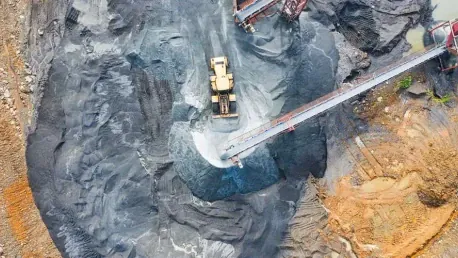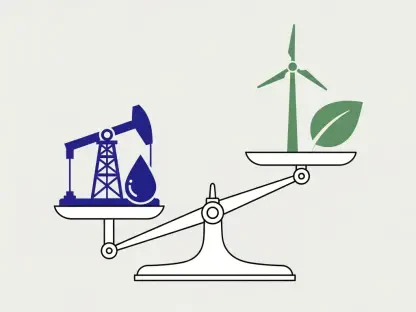The Bełchatów mine and power plant in Poland, the largest coal mine in Europe, stands at a critical juncture as its lignite reserves near depletion. Once a cornerstone of Poland’s energy industry, this massive site not only contributed close to 20% of the nation’s electricity but also provided direct employment for about 7,500 workers. With the impending shutdown, a heated debate has surfaced regarding the site’s future: whether to redevelop it as a leisure lake and recreational park, or transform it into a renewable energy hub. The decision carries significant weight, affecting job replacement, economic impact, environmental responsibility, and infrastructure utilization, making it crucial to consider the best pathway to sustain the region’s economic and social fabric.
The End of an Era: Bełchatów’s Coal Legacy
For years, the Bełchatów mine has been an integral part of Poland’s energy landscape, generating a substantial portion of the country’s electricity and supporting thousands of jobs. Despite its economic significance, the mine’s reliance on lignite, a particularly polluting type of coal, has made it environmentally unsustainable. As the mine’s shutdown progresses, the region must navigate the aftermath of losing a key economic driver. PGE, the state-owned utility that oversees both the mine and the power plant, has unveiled a vision for repurposing the pits by converting them into lakes and transforming the surrounding areas into recreational parks by 2070.
This extensive plan imagines a future where the site becomes a hub for various leisure activities, including skiing, golfing, cycling, kayaking, quad-biking, horse riding, climbing, and scuba diving. While this transformation promises a diverse array of employment and recreational opportunities, the lengthy 45-year timeline raises questions about its feasibility in addressing the immediate need to replace lost coal jobs and maintain economic vitality in the interim. Critics argue that this timeline does not align with the urgent economic and environmental responsibilities that come with such a significant transition.
Renewable Energy: A Viable Alternative
In contrast, many local officials and researchers advocate for a more ambitious and timely approach: converting Bełchatów into a renewable energy hub. Proponents of this strategy argue that it could swiftly generate more jobs, increase revenue, and contribute to energy production, thus serving the region more effectively and aligning with the broader goals of Europe’s green transition. The potential for renewable energy at the site is considerable, with estimates suggesting that it could support six to eleven gigawatts (GW) of renewable capacity. This figure surpasses the current power plant’s output of 5 GW, underscoring the feasibility of this alternative plan.
Envisaged projects include extensive solar and wind power installations, such as solar panels on the edges of the pits and even floating solar farms as the pits gradually fill with rainwater. Despite the site’s significant potential, PGE’s current plan earmarks a mere 0.7 GW for renewable energy, a conservative and, to many experts, disappointingly modest figure. Critics believe that a more robust allocation would better harness the site’s capabilities and contribute significantly to Poland’s shift toward a green energy model, while simultaneously revitalizing the local economy and providing much-needed job opportunities.
Community Concerns and Economic Implications
As the closure of Bełchatów’s mine and power plant looms, the surrounding community grapples with anxiety over future employment prospects. A survey conducted by the University of Łódź alongside the ‘Yes for Bełchatów’ women’s community group revealed widespread concern, particularly among women, about the negative impacts on their livelihoods. The survey also highlighted a strong community preference for investment in renewable energy projects rather than the proposed leisure park model. Such preferences underscore the community’s pressing need for immediate job creation and economic stability.
Additionally, the long timescale of the leisure park plan exacerbates concerns about economic stagnation. Many fear “depopulation” as younger residents might leave the area to seek job opportunities elsewhere, further complicating the region’s demographic challenges. Alternative projects that expedite the establishment of renewable energy plants and encourage other commercial investments could trigger economic transformation and provide varied employment opportunities quicker, thus averting a potential demographic decline and ensuring a more stable economic future.
Leveraging European Union Funds
Poland’s access to the European Union funds, such as the Just Transition Fund, offers a crucial financial lifeline to aid the economic transition away from coal. For the Łódź province, home to Bełchatów, €369 million has been designated to support small businesses, promote research, and provide retraining programs. There are broader funds, amounting to €3.85 billion, available nationwide for lower-carbon economic initiatives. These financial resources could prove instrumental in promoting sustainable growth and facilitating the region’s shift towards a greener economy.
Although generous retraining and severance packages are being offered to those laid off due to the mine’s closure, significant anxiety persists regarding joblessness and economic instability. Proper and effective utilization of these EU funds is critical to ensuring a smooth and equitable transition, helping workers adapt to new roles in the green economy and supporting the establishment of new, sustainable industries and jobs.
Global Comparisons and Lessons Learned
The Bełchatów mine and power plant in Poland, recognized as the largest coal mine in Europe, faces a pivotal moment as its lignite reserves are nearing exhaustion. For many years, this colossal site has been a vital element of Poland’s energy landscape, contributing nearly 20% of the country’s electricity and providing employment for around 7,500 individuals. As the shutdown looms, a contentious debate has emerged regarding the mine’s future. The main options on the table include redeveloping the site into a leisure lake and recreational park or converting it into a renewable energy hub.
This decision is critical and multifaceted, influencing job creation, economic stability, environmental stewardship, and the effective use of existing infrastructure. Redevelopment into a leisure and recreational area could potentially attract tourism, offering new job opportunities and economic benefits, but would require significant investment. On the other hand, transforming the site into a renewable energy hub aligns with global trends in sustainable energy but challenges lie in the transition process and the retraining of the workforce.
Balancing these factors is essential, as the chosen pathway will not only shape the regional economy but also have long-lasting impacts on social structures and environmental health. The community’s future hinges on a thoughtful and strategic decision that honors both its industrial heritage and the urgency of transitioning to greener energy practices.









